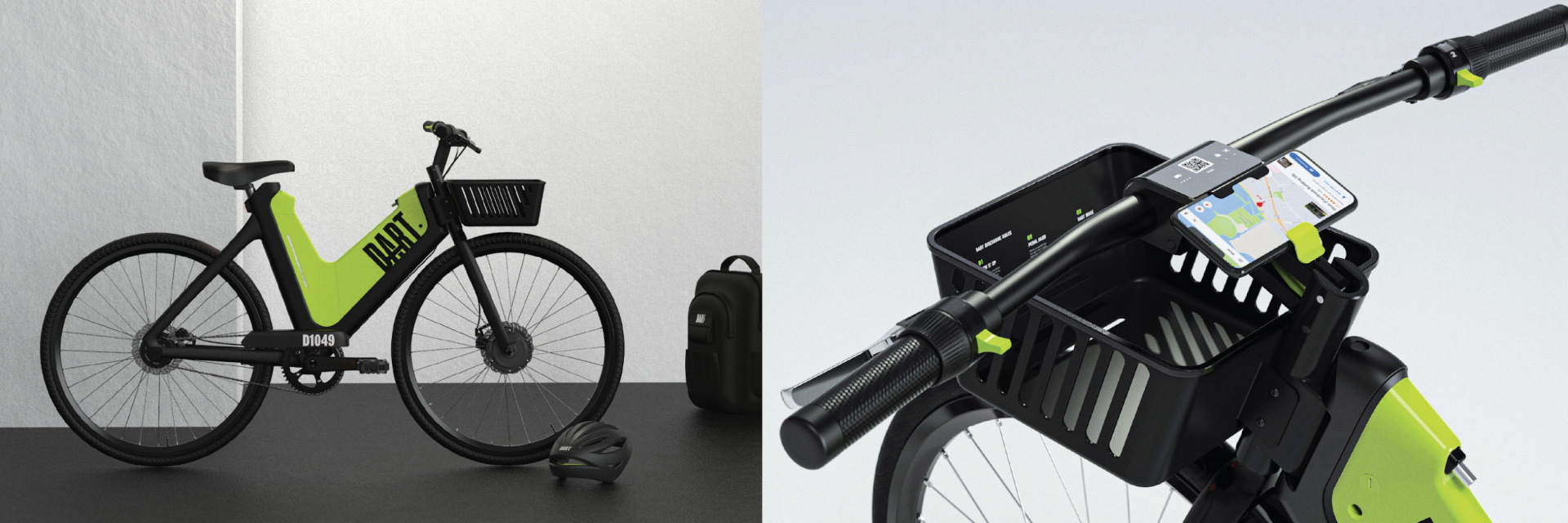
Rymma
Class: ID 2024 | Instructors: Steve Chininis
Rymma is a “one in all,” transformable floor lamp that accommodates to the various needs of modern micro-apartment dwellers. The rise of micro-apartments are largely accompanied with money-conscious, young professionals who have a modern aesthetic. Since micro-apartments are limited in space with less than 400 square feet, Rymma combines three of the most frequently observed light types in an apartment, including that of a standard floor lamp, a desk lamp, and a night light. This not only reduces the footprint of the lamp, this also helps the micro-apartment dweller save money by getting three lamps in one. With its rotary hinge, Rymma has an unique lampshade form that diffuses the light depending on the usage mode. Rymma also differs from other lamps as it can quickly minimize wire clutter; the user can simply kick the button at the base of the lamp to retract the cables back into the base. The final lampshade used thin sheet metal for an elevated, modern look. This product was designed in my sophomore year, but revisited this last semester! I had fun applying my attention to details and understanding of mechanics to make this a stronger project.

Dart
Group Members: Francis Lin, Nico Hitson
Class: ID 3042 | Instructor: Kevin Shankwiler
Dart is an electric rideshare bike and lifestyle brand that dares to pioneer a future of ridesharing that is not a compromise, but rather, one that ignites excitement and provides the experience to match. 100% of the current bike ride-share market is made of cruiser bikes-- a style that has an open, step through frame, accessible for people of all sizes to get on. However, the geometry of this bike makes it notoriously difficult to pedal uphill, and does not make for an enjoyable ride, in experience or aesthetics. Additionally, existing ride-share bikes are difficult to lock up to a rack, as its lock hub is only on one side of the back wheel, resulting in bikes littered in the way of pedestrians. Dart, in contrast, creates an enjoyable experience that makes the rider feel in control during the ride. Dart improves on a bike's performance, versatile riding characteristics, exciting aesthetics, and streamlined user interactions. The electric hub motor gives an extra power boost over difficult urban terrains, and the adjustable handlebar provides riders the option to ride with an aggressive lean over hills or pedal upright comfortably over flat grounds. Additionally, the streamlined locking module enables users to lock the bike from either the left or right side, greatly improving disembarking convenience when parking. All these features are packed into a unique frame that is still accessible to people of all sizes, overturning the long lasting idea that a ride-share bike must be a cruiser bike.

GM-HMI
Team Members: Gyeongtae Lyle Kim, Sungtae CK Kim, Anshul Sinha
ID 4082, Wayne Li & Stephen Sprigle
For ID/ME, a team of industrial designers and mechanical engineers worked together to design a tactile control stack paired with an augmented reality HUD to minimize driver control induced distractions and facilitate a comparatively safer and attractive rideshare driver experience both before and after pick up than of the Tesla and Chevy Malibu. Existing tactile and touchscreen UI center stacks force drivers to take their eyes off the road to interact with it due to the following: both provide only single modal feedback, have cramped, indistinguishable control placement, limited muscle memory friendly forms, and no immediate feedback, whether this is tactile or visual. Our redesign eliminates the need for the ride-share driver to interact with their phone (another culprit that causes their eyes to leave the road), and provides multi-modal, immediate visual feedback through the HUD, as well as tactile feedback through distanced, distinct forms. We also used existing consumer preference in UI touchscreen center consoles-- despite that its proven to result in more misclicks, more time eyes leave the road, and more crashes-- to our aesthetic advantage.
